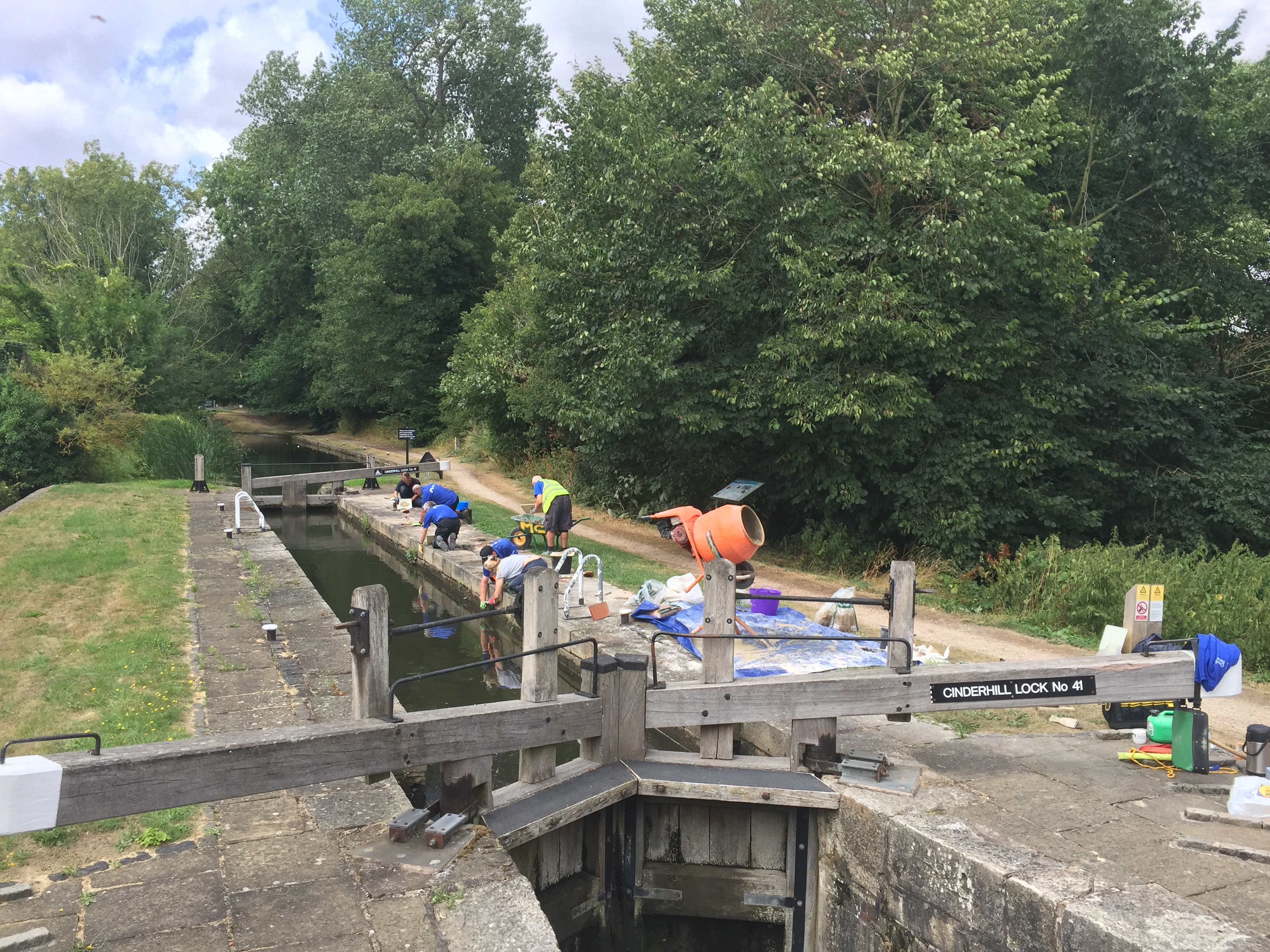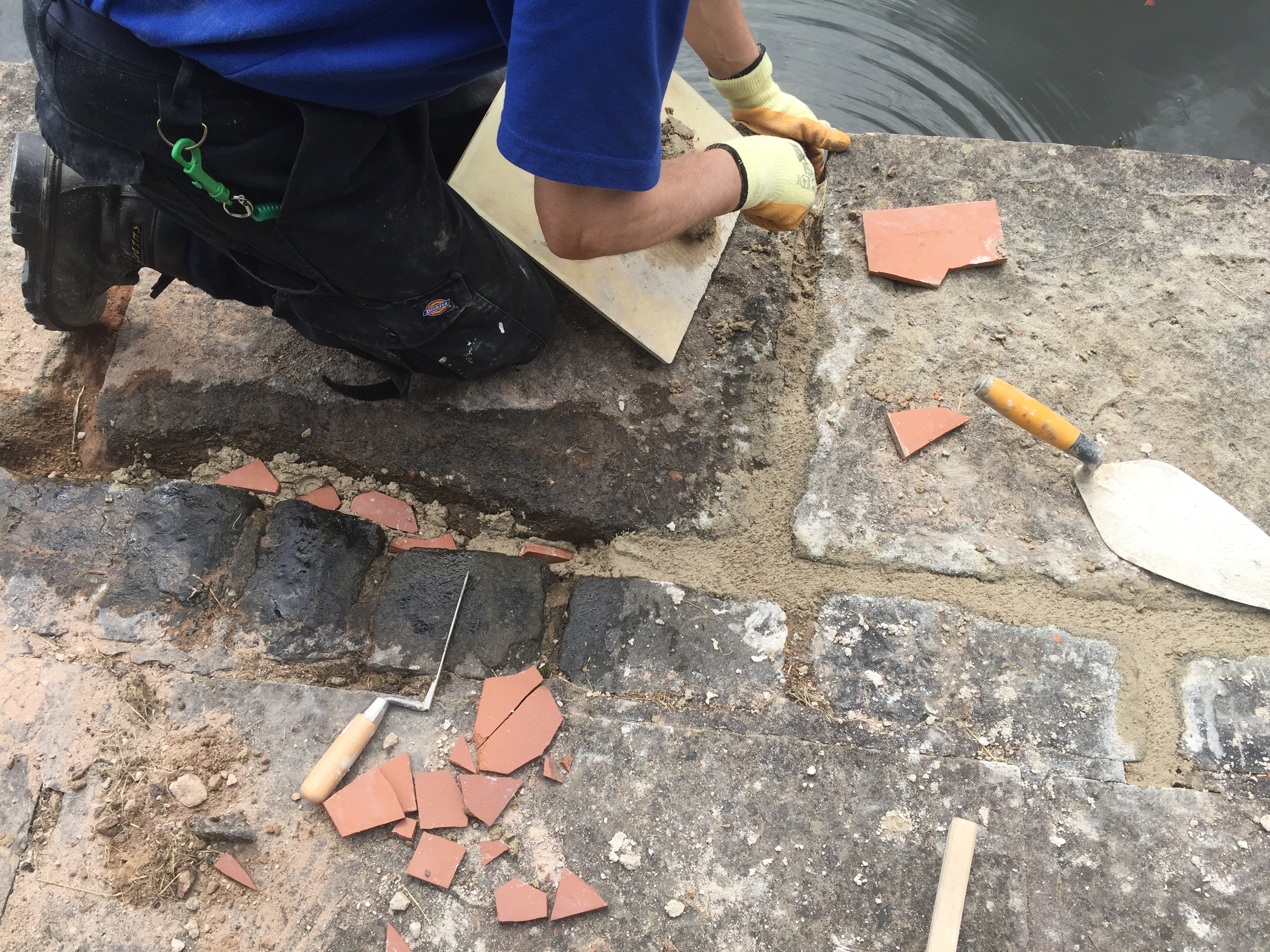Working with volunteers on the Chesterfield Canal
Womersleys helped train Volunteers from the Canal and River Trust in the use of lime mortars for the up keep of locks on the Chesterfield Canal. The canal was originally built with mortar made from burnt Magnesium Limestone (perhaps with some clay marl added) and local sands. This tradition of using hydraulic lime mortars for the construction and repair of the canal structures was continued by the group.
Magnesium limestone was originally burn close by the canal at South Anston and Thorpe Salvin and lime and brick production at this point allowed the canal to be constructed in both directions from this source of building materials. The lime was not favoured by the farmer being caustic for longer than the calcium limestone from the Matlock or Bakewell areas but it was used for the canal building and later house building.
The Chesterfield Canal, was built in the 1760s to carry lead ore and other minerals from the peak district to the Trent water system, and was a significant waterway when canals were the main bulk transportation systems. It was also used to carry coal and limestone from collieries around Stavely, Killamarsh, Kiveton, and quarries in places like Anston.
During the first 50 years of the nineteenth century the canal prospered, for before the advent of the railways it was the only practicable method of carrying heavy, bulky goods and was much more efficient than horse and cart since a barge held far more than a cart and only needed the same one horse to pull it.
The most prosperous time in the canal’s history was in the 15 years from 1840. In 1834 the old Houses of Parliament had burned down. Barry and Pugin were the architects who were awarded the contracts to design the replacement of the Palace of Westminster and they chose Anston stone. Thus Magnesian Limestone from the Duke of Leeds’ quarries sited only two miles from the canal was chosen to be the building stone. A major clause in the contract was that the supply of stone must be constant; this gave continuous work for the canal for the first four years and intermittently for a further ten years. The stone was transported to Dog Kennel wharf, where it was loaded on to “cuckoo” boats for transport to West Stockwith for transhipment on to Trent sloops, thence sailed to London.
However, from about 1850 two industrial developments led to the decline of the canal. The first was the building of the railways. The second death blow to the canal was the sinking of Kiveton deep mine collieries, just north of the Norwood tunnel in 1864. The mining of this coal caused widespread subsidence and severely damaged the tunnel from 1875 onwards.
Commercial traffic continued on the eastern section of the canal until 1956.The detail of the decline of the canal and its subsequent restoration in the late 20th Century can be studied through the Chesterfield Canal Trust.


